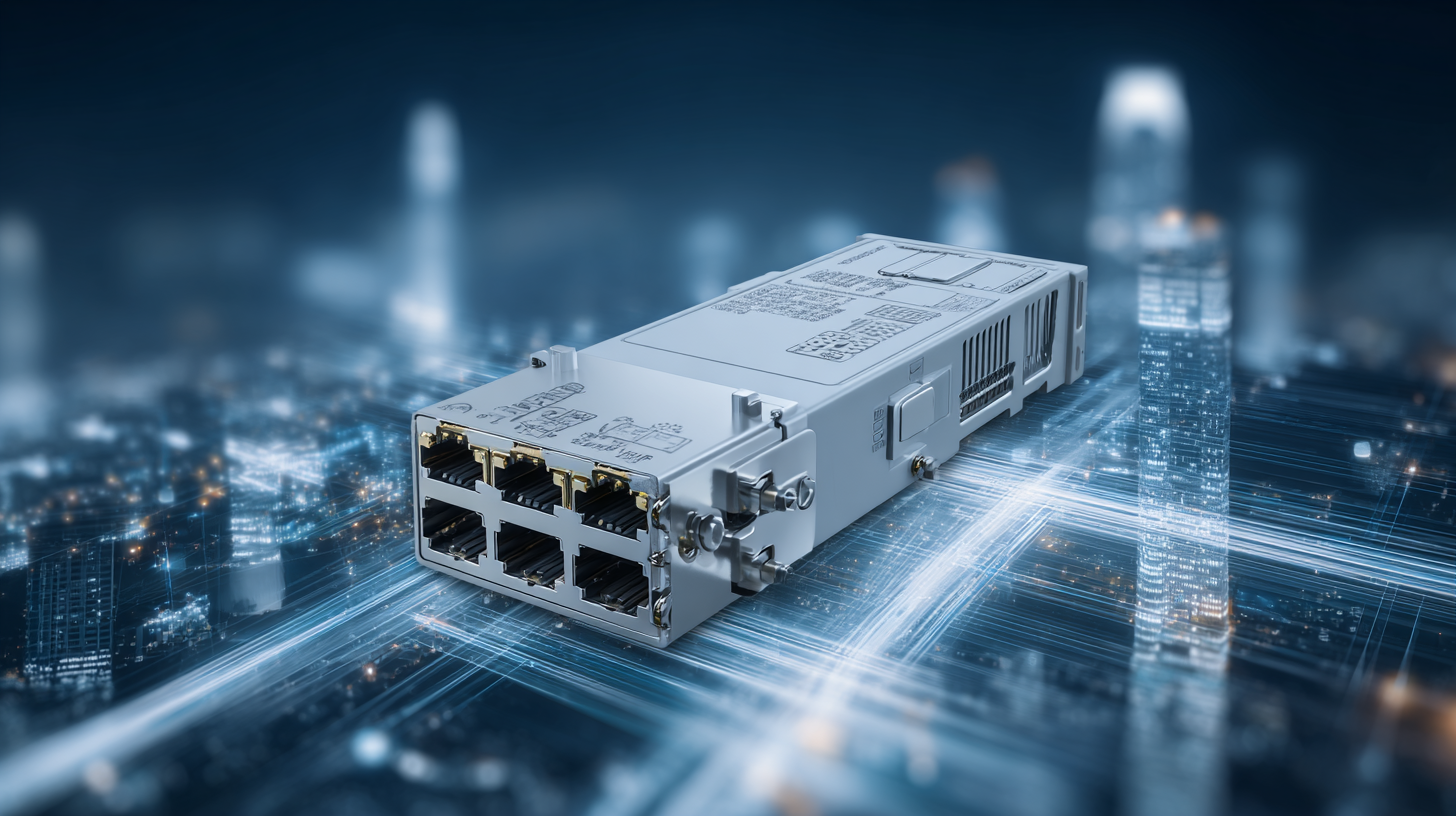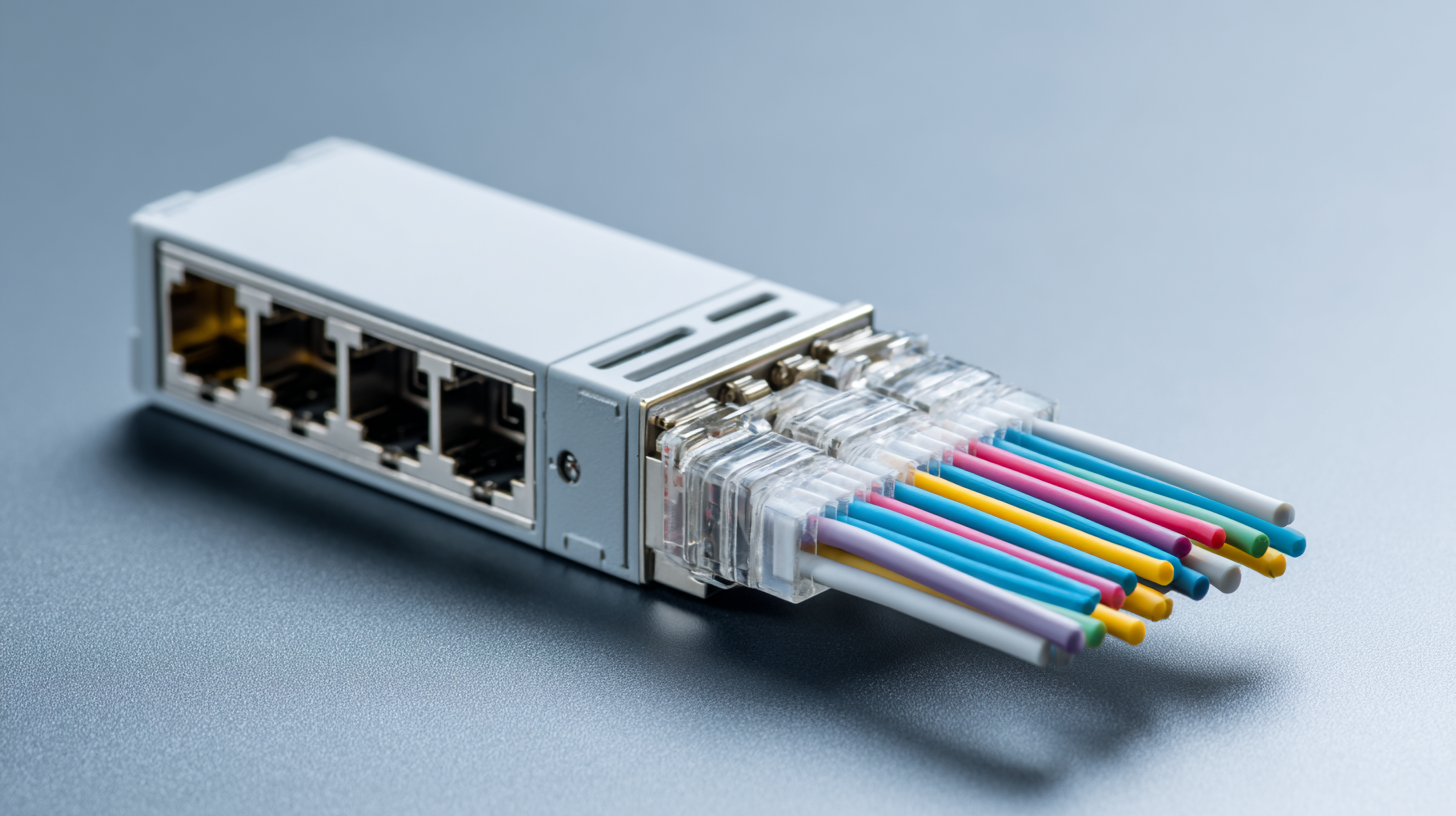Leave Your Message
As global data traffic continues to surge, driven by the rise of cloud computing, IoT, and 5G technologies, the demand for high-performance networking solutions is at an all-time high. According to the latest report by Cisco, global IP traffic is expected to reach 4.8 zettabytes per year by 2022, doubling every three years. In this increasingly competitive landscape, the 400G QSFP-DD AOC (Active Optical Cable) has emerged as a pivotal component in optimizing data centers and enterprise networks. Its superior bandwidth and reduced latency make it an optimal choice for high-speed connectivity. With innovations in manufacturing and technology, Chinese manufacturers are leading the charge, delivering high-quality 400G QSFP-DD AOC solutions that not only meet but exceed international standards. As the industry evolves, understanding how to select the right 400G QSFP-DD AOC for your network needs is crucial for maintaining a competitive edge in the global market.

When selecting 400G QSFP-DD AOC cables for your network, there are several key factors to consider to ensure optimal performance. First, evaluate the cable length required for your specific application. AOC cables come in varying lengths, and selecting the right one can significantly reduce signal loss. For instance, if your devices are located close to each other, a shorter cable can improve efficiency.
Another important factor is the type of connectors used. Make sure the AOC cables are compatible with your existing network hardware. The QSFP-DD standard is designed for high-speed connectivity, but verifying this compatibility saves you from potential connectivity issues down the line. Additionally, look for cables with high-quality materials and construction, as this can further enhance durability and performance.
Tip: Always check the manufacturer's specifications for data rate support and power consumption of the AOC cables. Ensuring these specifications align with your equipment’s requirements can help maintain network stability and efficiency. Regularly assess your current and future network needs to ensure that the cables you choose can accommodate anticipated growth in bandwidth demand.
When selecting a 400G QSFP-DD Active Optical Cable (AOC), it’s essential to understand the differences among the various types available in the market. Notably, 400G QSFP-DD AOCs offer different lengths, connectors, and technology specifications that cater to diverse networking environments. For instance, some models may be optimized for short-range connections within data centers, while others are designed for longer-distance applications, enabling flexibility in network designs.
In addition to physical characteristics, the performance metrics of 400G QSFP-DD AOCs also vary, such as power consumption, bandwidth capabilities, and latency. Manufacturers often provide detailed specifications that highlight these differences, allowing network engineers to make informed decisions based on their specific requirements. Moreover, factors like compatibility with network switches and routers play a crucial role in the selection process. By carefully analyzing the distinct characteristics and performance features of different AOC cables, organizations can ensure that they choose the optimal solution for their networking needs.

When selecting a 400G QSFP-DD Active Optical Cable (AOC), understanding the impact of distance and environment is crucial for optimal performance. The signal integrity of high-bandwidth optical transceivers like the 400G AOC can be significantly affected by the length of the cable. According to a report by LightCounting, AOCs are best suited for distances up to 100 meters in data center environments, where they minimize latency and maximize throughput. Beyond this distance, signal degradation can occur, leading to increased Bit Error Rates (BER), which directly impacts the efficiency of data transmission and can cause downtime in critical applications.
Environmental factors also play a pivotal role in AOC performance. Extreme temperatures and electromagnetic interference can impair signal quality. As noted in the IEEE 802.3bs standards, AOCs should ideally operate within a temperature range of 0°C to 70°C. For optimal reliability, it's recommended to avoid running AOCs near heavy electrical equipment or outside in extreme weather conditions.
**Tip:** When planning your network layout, consider using AOCs in controlled environments to maintain their performance.
**Tip:** Regularly monitor the temperature and humidity levels in your server rooms to ensure they are within the recommended ranges for AOC operation.
When evaluating the cost-effectiveness of 400G QSFP-DD Active Optical Cables (AOCs), it is essential to consider both the direct costs and the long-term operational savings. According to a report by Markets and Markets, the global 400G ethernet market is projected to grow from $1.1 billion in 2020 to $10.4 billion by 2025, driven by the increasing demand for high-speed data transfer in data centers and telecommunications. This rapid growth highlights the importance of selecting cost-effective solutions that can accommodate future scalability.

Additionally, when comparing AOCs to traditional copper cables, the initial investment in 400G QSFP-DD AOCs may be higher; however, the total cost of ownership often favors AOCs due to their lower energy consumption and reduced cooling requirements. A report from Omdia revealed that AOCs can consume up to 40% less power than their copper counterparts, offering significant savings over time. With data center energy costs escalating, the reduced power draw of AOCs presents a compelling argument for their adoption in modern networks. Thus, assessing the cost-effectiveness of the 400G QSFP-DD AOC should weigh both upfront costs and long-term operational efficiencies to make an informed decision.
When it comes to installing 400G QSFP-DD AOC cables, ensuring proper setup is essential for optimal network performance. Begin by selecting a suitable environment for your cables; avoid sharp bends and excessive pressure points that can affect signal integrity. Before installation, check the compatibility of your AOC cables with existing hardware to prevent connectivity issues. Use cable organizers to minimize clutter and facilitate airflow, which is crucial for maintaining temperatures within acceptable ranges.
Maintenance plays a significant role in prolonging the lifespan of your AOC cables. Regularly inspect connections for dust and debris, as contaminants can degrade performance. Implement a routine that includes checking for physical damage to cables, as even minor wear can lead to significant issues. Additionally, after heavy usage, allow for a cooling-off period for cables to prevent thermal stress.
By following these installation and maintenance tips, you can ensure your 400G QSFP-DD AOC cables operate at peak performance, meeting the demands of your network effectively.
